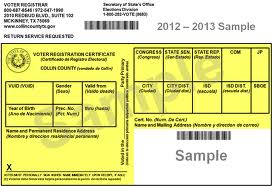Pondering the County Attorney situation.
Despite technically resigning, [Harris County Attorney Christian] Menefee has remained the acting county attorney throughout the campaign period. It’s not clear if he will remain in the position as he prepares to campaign for a runoff election. Harris County commissioners briefly discussed the issue during executive session at a special meeting Tuesday, but did not take any action.
Menefee declared his candidacy for Texas’ 18th Congressional District March 14, triggering a provision in the Texas Constitution that requires certain elected officials resign from their positions upon announcing their intent to run for another. But Commissioners Court has not designated a successor, meaning Menefee will remain as the “holdover” county attorney until one is chosen.
I’ve been wondering about this, too. There was a scenario in the special election – unlikely, but not impossible – in which Menefee didn’t qualify for the runoff and then declared he was no longer running for CD18 and would not file for it in the primary. Would he till have to resign as County Attorney? Probably, but I have no idea if a situation like that had ever happened before. And as long as we’re engaging in hypotheticals, what would stop Commissioners Court from appointing him as his own replacement? My guess would be “someone would immediately sue and the courts would not be having it”, but again I’d bet this has never happened before and so who knows.
As Campos notes, both Menefee and Amanda Edwards will have to file for the March primary, in which Rep. Al Green will also be an opponent, without knowing whether they will be effectively running as the incumbent or as the disappointed loser of the special election. They may not know that until early voting for the primary is almost upon us. Whatever happens there, I would venture to guess that Menefee filing for CD18 in the primary will spur Commissioners Court to name an actual replacement County Attorney. Even in the ridiculous scenario where Menefee himself was the appointed replacement, County Attorney will be on the ballot in 2026, to fill out the remainder of Menefee’s term. Commissioners Court will have to name a replacement if only to settle the question of whether they’re picking a caretaker who won’t run in 2026 or not.
Rice poli-sci prof Mark Jones brings up my favorite hobby horse in an op-ed about Dem enthusiasm and turnout.
The Nov. 4 election revealed a substantial enthusiasm gap among Democratic and Republican voters coast to coast as well as here in Houston. We are a year away from the 2026 midterms, but these results, combined with public opinion polls that show declining public approval of President Donald Trump and Republicans in general, should be setting off warning bells in Republican campaign headquarters across the country. Locally, these results may cause some high-profile Democrats to take a second look at the newly redrawn 9th Congressional District. While Trump won the new TX-9 by 20 points in 2024, Republican Sen. Ted Cruz lost the district by 1% in 2018. Last night’s results suggest that if current trends continue, the 2026 election is likely to look more like 2018 than 2024, which would in theory put TX-9 into play for Houston Democrats.
As noted before by me. I will also refer you to that Nate Cohn piece about Trump 2024 voters flipping to Dems. The good news is that we now have a decent candidate in CD09. See also Daily Kos for more on this.
LOL.
The California Republican Party is asking a federal court to stop California’s new Congressional maps from taking effect.
The party and their attorneys sued California Secretary of State Shirley Weber and Gov. Gavin Newsom a day after voters approved the Democratic-drawn maps in a measure known as Proposition 50. The maps are in effect for the next three elections. Republicans argue the new maps violate the Voting Rights Act by favoring Latino and Hispanic voters.
Proposition 50 tossed the state’s U.S. House District maps drawn by the state’s citizen-led independent redistricting commission and replaced it with new maps that were quickly drawn by Democrats and their consultants. The maps attempt to remove up to five Republicans from California’s representation in Congress.
Mike Columbo, an attorney who filed the lawsuit, pointed to various statements made by map drawer Paul Mitchell and Democratic legislative leaders in California, who said the maps give Latinos more voting power that other groups.
The party Wednesday filed in U.S. District Court for the Central District of California.
[…]
Asked for a comment on the lawsuit, a spokesperson for Newsom’s office said it hadn’t reviewed it yet, but said in part, “Good luck, losers.”
Via Michael Li, and you can see the complaint in a reply tweet. I have nothing to add to this.
And speaking of losers:
Gov. Greg Abbott and his most prominent Democratic challenger, state Rep. Gina Hinojosa, quickly sought to frame Tuesday’s election results in New York City and other states a sign of what’s at stake for the governor’s race in Texas next year.
Abbott, a Republican seeking a record fourth term in office, posted numerous times about Zohran Mamdani’s victory in the New York City mayoral race.
The governor offered “thoughts & prayers” for New York in a post on X Tuesday night. On Wednesday, he wrote that the Democratic socialist’s win makes Texas the “unrivaled HQ for capitalism in the U.S.”
“The battle lines between capitalism and socialism were clearly drawn last night,” Abbott wrote. “We will secure capitalism for the future of our country and deny the expansion of socialism that is creeping across the US.”
The governor notably did not mention California’s election, in which voters approved a new congressional map meant to counter the new Texas map Abbott signed into law earlier this year.
Hinojosa, meanwhile, responded to the governor’s “thoughts & prayers” post: “Wouldn’t it be nice if Texas had a governor who was focused on the things *Texans need* instead of…….whatever this is.”
You could probably charge Mamdani enough rent for all the space he’s taking up in your head to pay for that private school voucher scam, Greg.
















